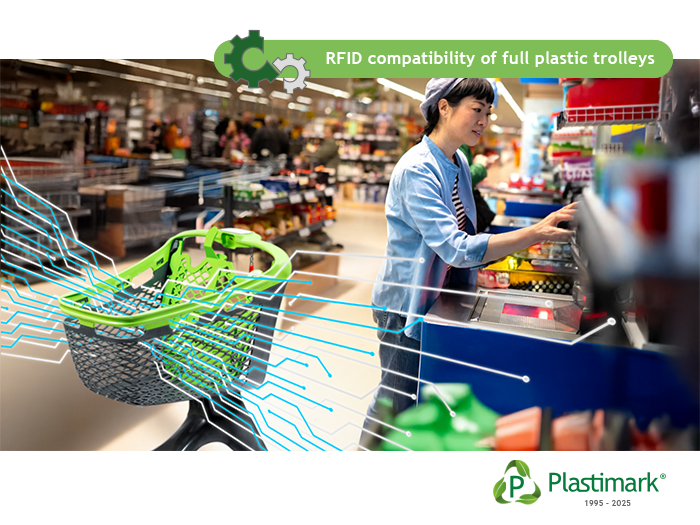In the world of large-scale retail, the digitalization of processes and the spread of RFID technologies are revolutionizing store management, making checkout, inventory, and product traceability operations more efficient. In this context, one often overlooked yet crucial element is the material of the shopping trolleys.
Traditional metal trolleys act as a physical barrier to the radio waves used by RFID systems. Metal reflects and shields electromagnetic waves, creating what is known as a “Faraday cage” effect, which interferes with communication between product tags and RFID readers. The result is less reliable reading, operational slowdowns, and the need to increase reader power or install additional antennas to compensate for interference.
Plastic trolleys, on the other hand, are completely transparent to radio waves, allowing clear, precise, and simultaneous reading of RFID tags even when products are placed in different areas of the trolley. This results in faster and more accurate scanning processes, smoother self-checkout flows, and more efficient inventory control.
As smart retail solutions continue to evolve, the full-plastic trolley stands out as the ideal choice for stores looking to combine innovation, sustainability, and optimal RFID performance. Thanks to its non-conductive nature and its lightness, strength, and versatility, it offers the most effective response to the needs of modern retail.
Plastimark provides full-plastic trolleys that are lightweight, durable, and versatile, designed to optimize store traceability and automation systems with a practical approach to sustainable innovation.
